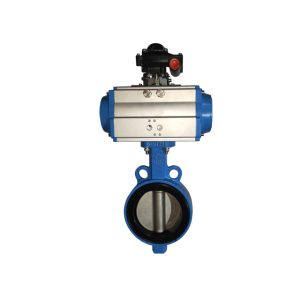Table of Contents
ToggleGate valves with flanged end connections remain hugely popular across many industries. Their robust construction and straightforward operation have made them workhorses on piping systems everywhere. However, like any valve type, flanged gate valves also have their limitations.
- Flanged connections allow easy installation between pipe sections
- Full bore design minimizes flow resistance and pressure drop
- Simple operating mechanism with minimal moving parts
Let’s take a balanced look at the main advantages and disadvantages.
Flange Gate Valves – Key Advantages
Here are some of the key advantages of Flanged gate valves:
- Ease of Installation and Maintenance
One of the biggest benefits of flanged gate valves is the convenience factor. Those flanged end connections make installation a breeze – simply bolt the valve body between matching pipe flanges. Likewise, removing the valve for maintenance is just as straightforward.
- Unobstructed Flow Path
When in the full open position, the wedge-shaped gate drops completely out of the flow path. This provides an unobstructed, full bore opening equal to the pipe ID. The lack of any flow obstructions helps minimize pressure drop and resistance to flow.
- Robust, Simple Construction
Gate valves have a delightfully uncomplicated design. The two-piece body houses a gate that slides perpendicular to the flow path between parallel seats. With minimal moving parts and no complex mechanisms, there’s less to go wrong or require extensive maintenance.
Flanged Gate Valves – Key Disadvantages
Flanged gate valves certainly have a few limitations. Let’s discuss some of the key disadvantages of flanged gate valve:
- Potential for Valve Stem Blowout
One of the biggest safety concerns with gate valves is the possibility of the valve stem blowing out. If the stem packing leaks and goes untended, the buildup of pressure can forcibly eject the entire stem — creating a dangerous projectile. Proper maintenance is critical.
- Stem Packing Wear and Leakage
Speaking of packing, leakage around the stem is another common issue as the valve cycles open and closed over its lifetime. The sliding motion and exposure inevitably causes the packing material to degrade and harden, requiring repacking.
- Not for Frequent Operation or Throttling
Gate valves are designed for straight open or closed service, not modulating flows. Attempting to throttle the valve with the gate partially open can cause vibration, hunting, and excessive wear on the gate and seats over time. Using them for frequent operation also increases packing deterioration.
- High Operating Torque in Large Sizes
The larger the valve size, the greater the torque required to open and close the gate against flow forces and friction. This can make manual operation very difficult, often necessitating a gear operator or actuator.
Conclusion
Like any valve type, flanged gate valves have their advantages and limitations. They can provide an economical, reliable shutoff solution for liquid and gas systems that don’t require frequent cycling or modulation. Just be sure to properly assess the operating conditions.
When you need quality flange gate valves from a trusted manufacturer, Xintai Valve has the experience to meet your specifications. Our team leverages decades of valve expertise to deliver dependable products you can count on.










